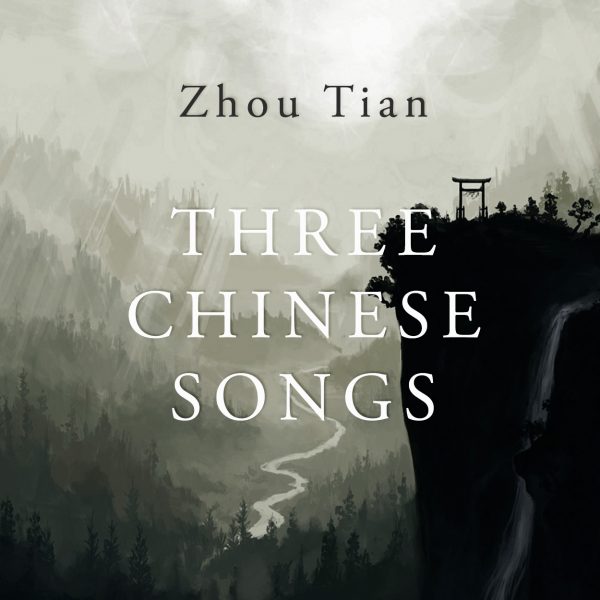
Three Chinese Songs
(2002) | 10 minutes
Commissioned by The Curtis Institute of Music
Text by Xu Zhimo
SCORING soprano, piano
PREMIERE 29 January 2003 at the Field Concert Hall at the Curtis Institute of Music, Philadelphia, PA, by Rachael Garcia, soprano, and Zhou Tian, piano
Listen
Wind 風
Yellow Bird 黃鸝
Transience 偶然
Rachael Garcia, soprano; Zhou Tian piano. Live at the Curtis Institute of Music. ©All Rights Reserved.
Programme Note
Commissioned by the Curtis Institute of Music, Three Chinese Songs touch on the ephemeral – of wind, a wisp of cloud and the color of a bird. Sung in Chinese, Wind is a wordless vocalise rising and falling, accompanied by relentless, bell-like piano chords. Yellow Bird is lively, a fleeting flash of color, while Transience begins with a sorrowful a cappella before flowing runs in the second part evoke a recollection of past happiness.
Text
I. Wind
《風》
(vocalise)
II. Yellow Bird
Text by Xu Zhimo (selection)
《黃鸝》 (節選)【徐志摩】
一掠顏色飛上了樹。
「看,一只黃鸝!」有人說。
翹著尾尖,它不作聲,
艷異照亮了濃密──
像是春光,火焰,像是熱情。
A spectrum of color springs into a tree,
“Look, a yellow bird!” someone exclaims.
Proudly raising its tail, silent,
Its foreign beauty illuminates the foliage—
As a ray of spring, a blaze, as passion.
III. Transience
Text by Xu Zhimo
《偶然》【徐志摩】
我是天空裡的一片雲,
偶爾投影在你的波心──
你不必訝異,
更無須歡喜──
在轉瞬間消滅了蹤影.
你我相逢在黑夜的海上,
你有你的,我有我的,方向;
你記得也好,
最好你忘掉,
在這交會時互放的光亮!
I am a wisp of cloud in the sky,
By chance, casting a shadow upon your heart—
Don’t be startled,
Even less so, hopeful—
For it will move on in an instant.
On this dark night, you and I met on the sea,
You with your, I with my own, direction;
While you may remember,
It’s better to forget,
The luminous moment we shared!
Translated by Meng-Chieh Liu and Zhou Tian
Reviews
“The highlight of this concert was ‘Three Songs‘ by Zhou Tian…This set, sung in Chinese and accompanied by the composer, was the most relaxed and confident on the program, presented without being over-sung, with text and music most commensurate.”
—Sequenza21
May we suggest…
- A Crown for Sonia (voice, cello & piano)
- Irises (flute & piano)
- Unheard Wishes (clarinet & piano)
- Night Tour (violin & piano)